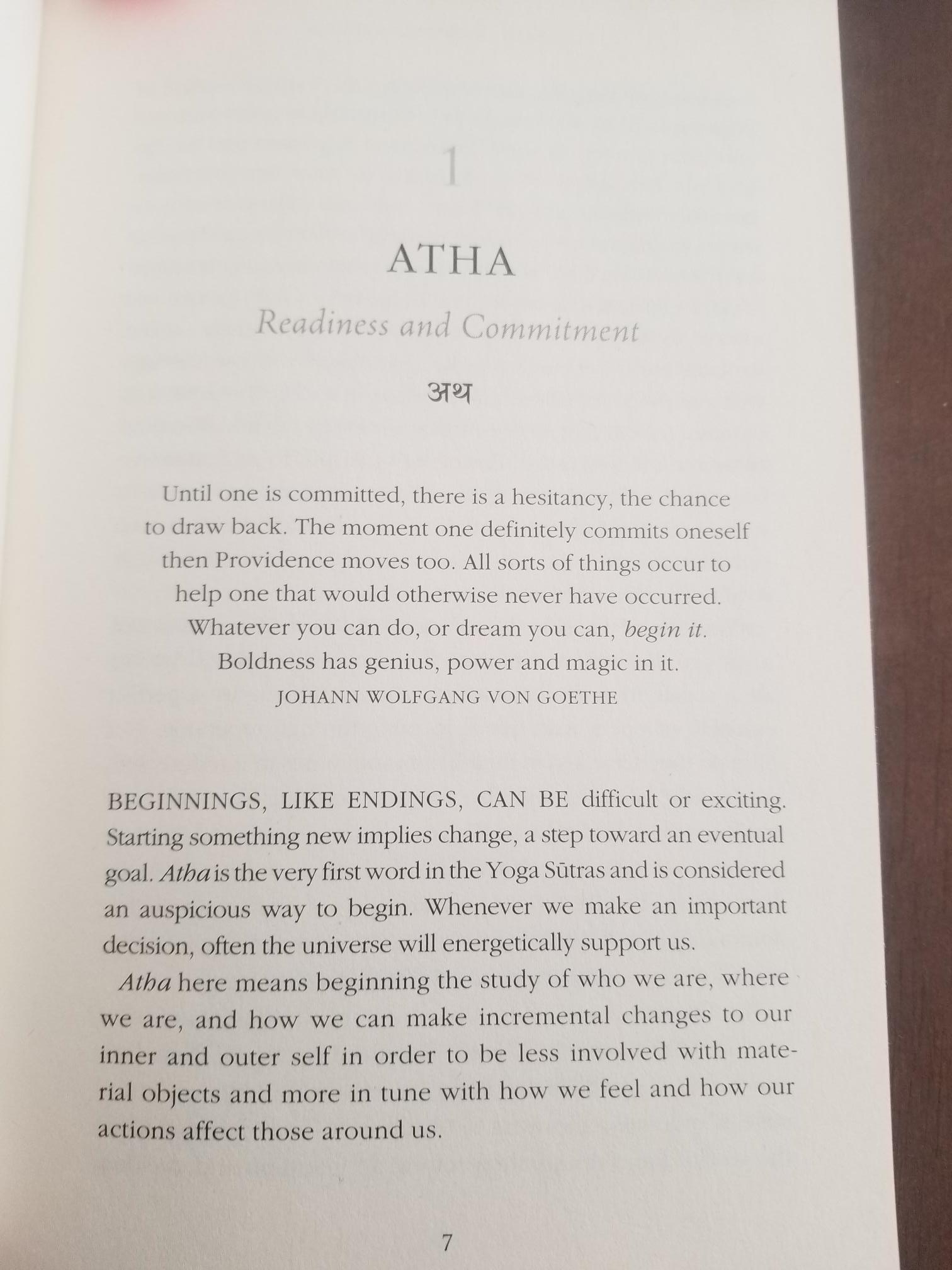
**“Be Here Now” in the Framework of Patanjali’s Yoga Sutras: A Contemplation on Presence and Preparedness**
One of the most significant lessons of yoga philosophy can be captured in the phrase “be here now,” an eternal invitation to fully embrace the current moment. This concept resonates deeply with the initial aphorism of Patanjali’s *Yoga Sutras*, a key text of classical yoga: **“Atha yoga anushasanam.”** Roughly translating to “Now, the discipline of yoga begins,” this sutra is both elegantly simple and deeply meaningful. The first term, “atha,” signifying “now,” is crucial—it emphasizes the significance of readiness, intention, and the imperative of being entirely present in the current moment. It serves as an invitation to pause, enter the present, and prepare oneself for the transformative path of yoga.
### The Importance of “Atha” in Yoga Philosophy
The term “atha” holds much more significance than its conciseness suggests. In Sanskrit, it serves as a signifier of auspicious starts—employed only when one is genuinely prepared to embark on something meaningful or sacred. Its position at the very beginning of the *Yoga Sutras* is deliberate; it highlights the necessity of readiness before delving into the teachings of yoga. Patanjali implies not merely physical readiness but rather a harmony between body, mind, and spirit. Such readiness involves cultivating awareness, eliminating distractions, and fully embracing the present moment.
Saying “atha” is a testament to one’s presence. It marks a conscious entry into the now, distancing oneself from past distractions or future worries. This perspective indicates that yoga transcends mere physical postures or intellectual comprehension; it is an experiential journey commencing here and now with mindful intention.
### Yoga as Structure and Practice: The Role of the Present Moment
The phrase that follows “atha” in the sutra, “yoga anushasanam,” translates to “the discipline of yoga.” Patanjali’s choice of “anushasanam” illustrates the organized and systematic essence of the yogic path. This journey is more than concepts or ideas—it encompasses practice, repetition, and the integration into daily life. The emphasis on presence through “atha” is vital because yoga, by its very nature, unfolds in the present moment.
Without mindfulness and concentrated awareness of the now, the genuine advantages of yoga would remain elusive. Patanjali’s intentional use of “atha” at the text’s commencement serves as a reminder to practitioners that transformative significance—whether physical mastery, mental clarity, or spiritual awakening—can only commence when one is entirely present.
This philosophy aligns closely with modern mindfulness practices, which likewise encourage a return to the present as the foundation of growth and well-being. Whether on the yoga mat or in daily existence, fostering the ability to “be here now” enables us to observe without judgment, act with intention, and respond thoughtfully instead of reacting impulsively.
### The Call to Action: “Be Here Now”
Although the opening sutra is straightforward, it acts as a call to action for those pursuing transformation through yoga. It positions the study and practice of yoga not as theoretical but rather as experiential, grounded in the awareness of this moment. This vital teaching underscores that real progress on the yogic pathway cannot happen if the practitioner is not rooted in the now.
In today’s world, rife with distractions and a mind often preoccupied with past regrets or future concerns, the wisdom embedded in “atha yoga anushasanam” is more pertinent than ever. To initiate yoga—or any worthwhile endeavor in life—one must relinquish mental noise and step into the present with clarity and purpose.
### Practical Applications of “Atha” for Contemporary Practitioners
For those engaged in yoga in the modern era, “atha” stands as a practical reminder of how to approach the mat, the cushion, or one’s daily routines. Here are some methods to integrate this principle into practice:
1. **Intentional Grounding**: At the onset of a yoga session or meditation practice, take a moment to consciously connect with the present. Establish an intention to stay grounded in the here and now throughout your practice.
2. **Mindful Engagement**: During asanas (postures), concentrate on your breath, bodily sensations, and mental state. Practice observing without judgment, acknowledging when your mind begins to drift and kindly redirecting it back to the present.
3. **Everyday Awareness**: Extend the practice of “atha” beyond yoga. Approach daily activities—walking, eating, or even chatting—with the same level of presence, viewing each moment as a fresh beginning.
4. **Embracing Imperfection**: The call to “be here now” reminds us to release the quest for mastery or perfection. Yoga,